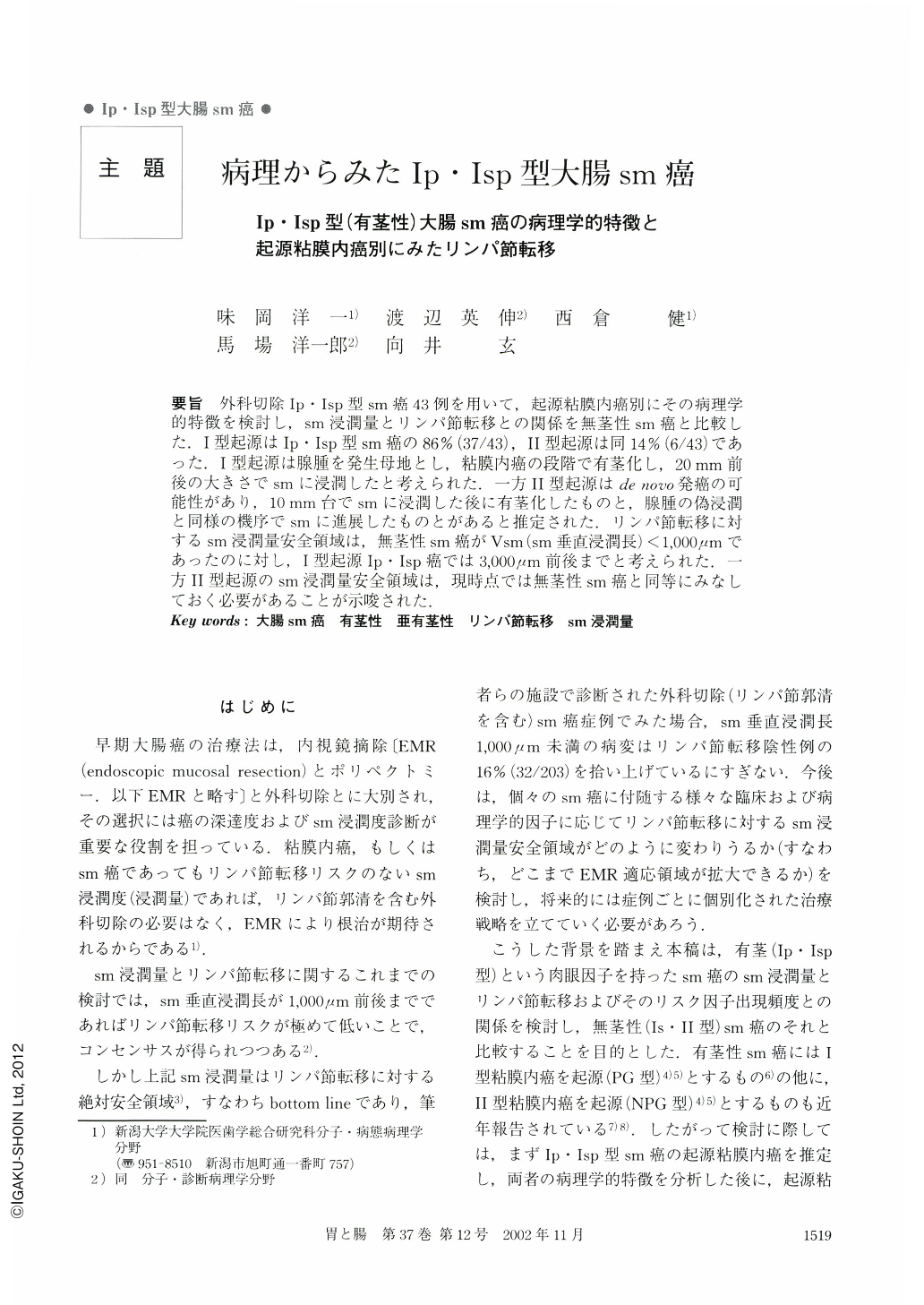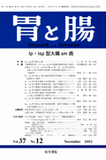Japanese
English
- 有料閲覧
- Abstract 文献概要
- 1ページ目 Look Inside
- サイト内被引用 Cited by
要旨 外科切除Ⅰp・Ⅰsp型sm癌43例を用いて,起源粘膜内癌別にその病理学的特徴を検討し,sm浸潤量とリンパ節転移との関係を無茎性sm癌と比較した.Ⅰ型起源はⅠp・Ⅰsp型sm癌の86%(37/43),Ⅱ型起源は同14%(6/43)であった.Ⅰ型起源は腺腫を発生母地とし,粘膜内癌の段階で有茎化し,20mm前後の大きさでsmに浸潤したと考えられた.一方Ⅱ型起源はde novo発癌の可能性があり,10mm台でsmに浸潤した後に有茎化したものと,腺腫の偽浸潤と同様の機序でsmに進展したものとがあると推定された.リンパ節転移に対するsm浸潤量安全領域は,無茎性sm癌がVsm(sm垂直浸潤長)<1,000μmであったのに対し,Ⅰ型起源Ⅰp・Ⅰsp癌では3,000μm前後までと考えられた.一方Ⅱ型起源のsm浸潤量安全領域は,現時点では無茎性sm癌と同等にみなしておく必要があることが示唆された.
Forty-three cases of type Ⅰp・Ⅰsp submucosal colorectal carcinomas were classified into those originating from polypoid intramucosal carcinoma (polypoid-origin) (86%) and those originating from superficial intramucosal carcinoma (superficial-origin) (14%) . Polypoid-origin tumors were thought to develop from the adenomacarcinoma sequence and it was also thought that the pedunculation was formed before they started submucosal invasion, when they were around 20 mm in size. On the other hand, Superficial-origin tumors were thought to arise de novo and the pedunculation was formed after they had invaded the submucosa, when they were 10 mm in size. Although there was no risk of lymph node metastasis for polypoid-origin tumors with a depth of submucosal invasion of 3,000μm or less, no such estimation could be made for superficial-origin tumors, so their potential risk of lymph node metastasis should be regarded as similar to that of superficial-type submucosal carcinomas.

Copyright © 2002, Igaku-Shoin Ltd. All rights reserved.


